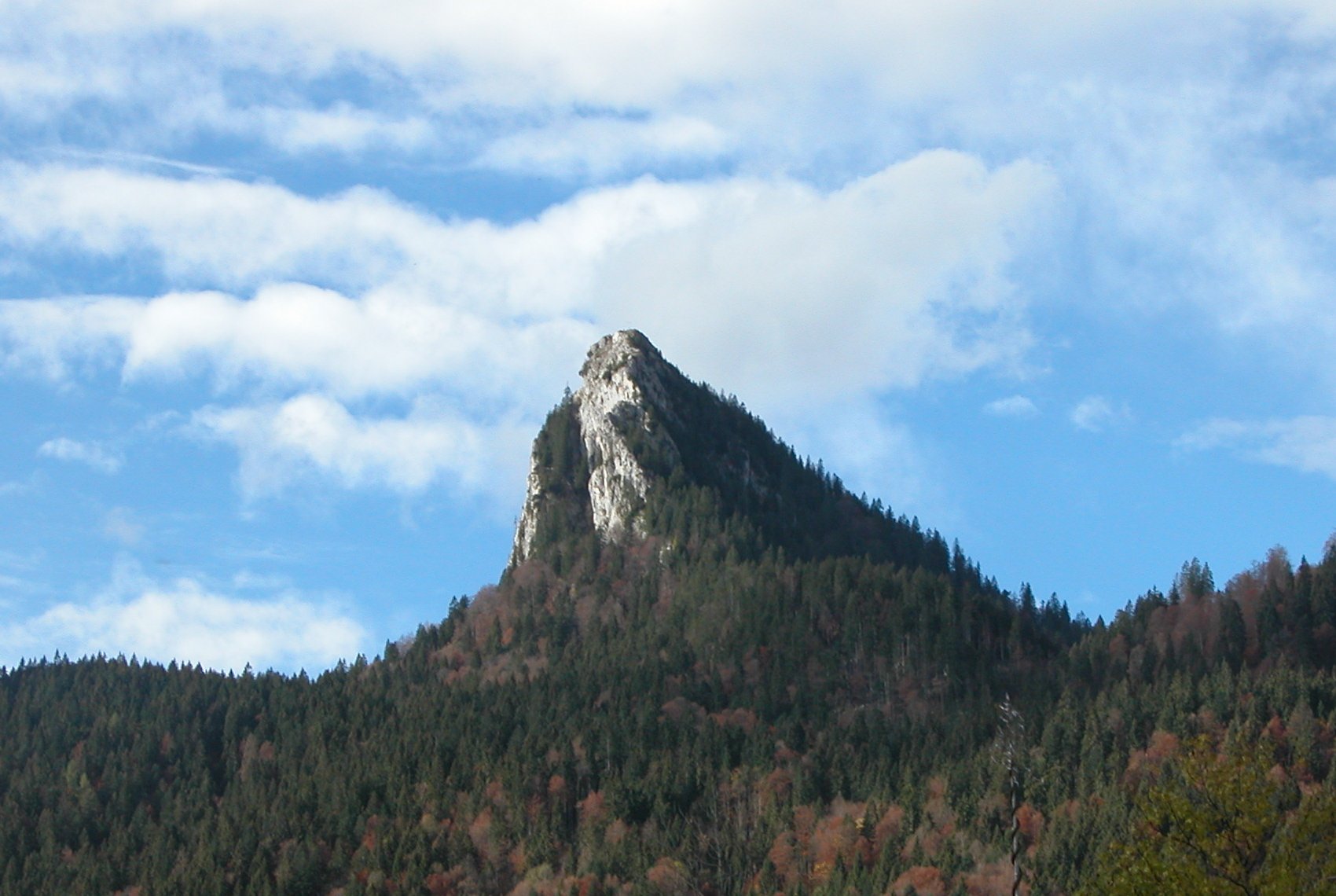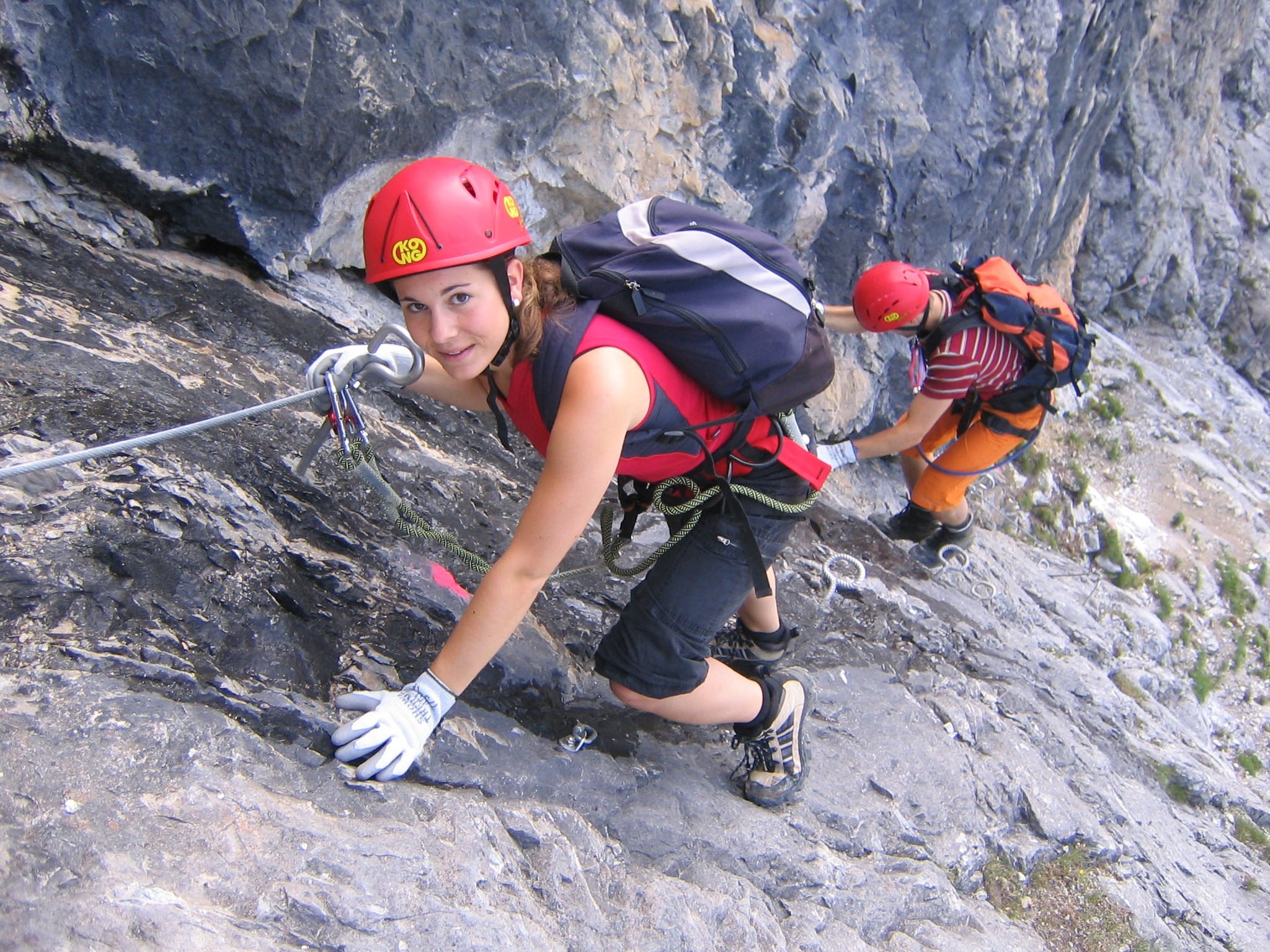|
Blauberge
The Blauberge ("Blue Mountains") or Blauberg are a mountain range in the Bavarian Prealps on the border between the states of Bavaria in Germany and Tyrol in Austria. Its highest summit is the ''Halserspitze'',Federal Office for Metrology and Survey (BEV): Austrian map series 1:50.000AMAP Online accessed on 2 November 2010 or ''Halserspitz''Bundesamt für Kartographie und Geodäsie, Landesamt für Vermessung und Geoinformation Bayern: Digitale Topographische Karte 1:50 000BayernViewer, accessed on 2 November 2010 at 1,862 m. Location and area The Blauberge are part of Upper Bavaria's Mangfall Mountains or more precisely the Tegernsee Mountains and are located about 11 kilometres south of the Tegernsee lake. The crest of the Blauberge, which runs for about 4 kilometres in a west–east direction, forms the border between Austria to the south and Germany to the north. To the south the Brandenberg Alps extend as far as the valley of the River Inn. To the north lies the ''Wolf ... [...More Info...] [...Related Items...] OR: [Wikipedia] [Google] [Baidu] |
Schildenstein
The Schildenstein is a 1613 m high mountain in the Mangfall Mountains in Bavaria. The peak can be reached after an easy hike from Kreuth over the ''Geißalm'' and ''Königsalm''. The route via the ''Wolfsschlucht'', on the other hand, is made secure by wire cables. The Blauberge are connected to the East side of the Schildenstein. The ''Kavalierhaus'' on the ''Königsalm'' was built in 1818 by the King of Bavaria, Maximilian I Joseph of Bavaria, Maximilian I. The king was said to have frequented the Alpine pasture. The wooden structure nearby dates from 1723, and is the largest historic alpine hut in the Miesbach (district), Miesbach district. External links "Der Schildenstein: Steinmandl.de (German) Mountains of Bavaria Mountains of the Alps ... [...More Info...] [...Related Items...] OR: [Wikipedia] [Google] [Baidu] |
Brandenberg Alps
The Brandenberg Alps (german: Brandenberger Alpen) are a sub-group of the Northern Limestone Alps, that run in front of the Eastern Alps for their whole length. They lie entirely in Austria between Achensee in Tyrol, the Inn Valley and the Bavarian Prealps. They are widely known in German as the ''Rofangebirge'', although the actual ''Rofan'' (also ''Sonnwendgebirge'') is only the western part of the area between the Brandenberger Ache stream and the Achensee lake. It consists of a central mountain group and three individual mountains. The Guffert (), which is located outside the central group, forms a distinct mountain block. It is located north of Kramsach, between the Tegernsee Blauberge and the central Rofan. The Unnütze, at the northern end of the Achensee east of Achenkirch, and the Ebener Joch () east of Maurach at the southern end of the Achensee, are also outside the central mountain range. Neighbouring mountain ranges The Brandenberg Alps border on the following ... [...More Info...] [...Related Items...] OR: [Wikipedia] [Google] [Baidu] |
Tegernsee Mountains
The Tegernsee Mountains (german: Tegernseer Berge) form a mountain region between the River Isar in the west and the lake of Tegernsee (lake), Tegernsee as well as the Rottach, Weißen Valepp and Grundache south of the Tegernsee, in the east, and so form a part of the Bavarian Prealps. The Tegernsee Mountains are also the westernmost part of the Mangfall Mountains (''Mangfallgebirge''). Well-known walking destinations are the peaks of a range of medium-high mountains with heights of under 2000 m. Climbing areas are the massifs of Roßstein, Roß- and Buchstein, Buchstein, and Plankenstein (Berg), Plankenstein. Notable peaks * Halserspitz (1,862 m) * Risserkogel (1,826 m) * Schinder (Berg), Schinder (1,808 m) * Plankenstein (Berg), Plankenstein (1,768 m) * Roß- and Buchstein, Buchstein (1,701 m) * Roßstein (1,698 m) * Hirschberg (Bayern), Hirschberg (1,670 m) * Schönberg (Bavarian Prealps), Schönberg (1,620 m) * Leonhardstein (1,45 ... [...More Info...] [...Related Items...] OR: [Wikipedia] [Google] [Baidu] |
Miesbach (district)
Miesbach () is a ''Landkreis'' (district) in Bavaria, Germany. It is bounded by (from the west and clockwise) the districts of Bad Tölz-Wolfratshausen, Munich and Rosenheim, and by the Austrian state of Tyrol. History In medieval times most of the district was occupied by clerical states. The Miesbach district is the union of the areas that were formerly occupied by the Hohenwaldeck county, the territories owned by the powerful Tegernsee Abbey, the territories owned by the Weyarn Abbey and Valley County. Hohenwaldeck was annexed by Bavaria in 1734, Valley in 1777. The clerical states were dissolved in 1803 and fell to Bavaria as well. Miesbach was established in 1803 the foundation ceremony took place in the court district of Hohenwaldeck. In 1818 Tegernsee was established. The same year the Bad Aibling district was established too and Miesbach had to deliver 12 municipalities. In 1939 Tegernsee was merged into Miesbach. During the territorial reform in Bavaria in 1972 Otterfin ... [...More Info...] [...Related Items...] OR: [Wikipedia] [Google] [Baidu] |
Alpenvereinskarte
Alpine Club maps (german: Alpenvereinskarten, often abbreviated to ''AV-Karten'' i.e. AV maps) are specially detailed maps for summer and winter mountain climbers (mountaineers, hikers and ski tourers). They are predominantly published at a scale of 1:25.000, although some individual sheets have scales of 1:50.000 and 1:100.000. The cartographic library of the German (DAV) and Austrian Alpine Clubs (OeAV) currently has about 70 different high mountain maps. Also, individual map sheets of the Alpine region or other interesting mountain areas in the world are continually being published. The publication of its maps has been a function of the Alpine Club since 1865. The reason the two clubs still issue their maps is to complement the range of more or less good official maps of the high mountains with special large-scale maps. This is especially true for the Austrian Alpine region, which is the classical field for Alpine Club branches (sections). Here, there are no official maps at a ... [...More Info...] [...Related Items...] OR: [Wikipedia] [Google] [Baidu] |
Alpenvereinsführer
The ''Alpine Club Guides'' (german: Alpenvereinsführer, commonly shortened to ''AV Führer'' or ''AVF'') are the standard series of Alpine guides that cover all the important mountain groups in the Eastern Alps. They are produced jointly by the German (DAV), Austrian (ÖAV) and South Tyrol Alpine Clubs (AVS). They have been published since 1950 by the firm of Bergverlag Rother in Munich, Germany. The AV guides contain all the routes – hiking trails, mountain hut approaches and summit climbs as well as ice and high mountain routes and ''klettersteigs'' in each mountain range. The descriptions are factual and dry, with few illustrations - rather unlike mountain books by e.g. Walter Pause – and despite introductory sections require general Alpine knowledge and experience. Examples are the ''AVF Allgäuer Alpen'' and the ''AVF Verwallgruppe''.The AV guides are often used as the basis for other publications and complement the Alpine Club maps or other map series. Available guid ... [...More Info...] [...Related Items...] OR: [Wikipedia] [Google] [Baidu] |
Achenkirch
Achenkirch is a municipality in the Schwaz district in the Austrian state of Tyrol Tyrol (; historically the Tyrole; de-AT, Tirol ; it, Tirolo) is a historical region in the Alps - in Northern Italy and western Austria. The area was historically the core of the County of Tyrol, part of the Holy Roman Empire, Austrian Emp .... It is located at the northern end of Lake Achensee. Land and Climate Breakup At the northern lakeside of Lake Achensee, there is the municipality Achenkirch and its component localities Achenkirch, Achensee, Achental and Achenwald, Scholastika and the terrain of the former Achenseehof farm. In other words, the municipal territory extends from Lake Achensee to the Bavarian border. Already in 1313 AD the village was known as “Achental”, while only in 1971 its name was changed to Achenkirch. Around the turn of the last century, Achenkirch was a popular destination for summer vacationists, including famous personalities such as the authors Peter Rose ... [...More Info...] [...Related Items...] OR: [Wikipedia] [Google] [Baidu] |
Klettersteig
A via ferrata (Italian language, Italian for "iron path", plural ''vie ferrate'' or in English ''via ferratas'') is a protected climbing route found in the Alps and certain other locations. The term "via ferrata" is used in most countries and languages except notably in German-speaking regions, which use ''Klettersteig''—"climbing path" (plural ''Klettersteige''). Infrastructure A via ferrata is a climbing route that employs steel cables, rungs or ladders, fixed to the rock to which the climbers affix #Safety and equipment, a harness with two leashes, which allows the climbers to secure themselves to the metal fixture and limit any fall. The cable and other fixtures, such as iron rungs (stemples), pegs, carved steps, and ladders and bridges, provide both footings and handholds, as well. This allows climbing on otherwise dangerous routes without the risks of unprotected scrambling and climbing or the need for technical climbing equipment. They expand the opportunities for acce ... [...More Info...] [...Related Items...] OR: [Wikipedia] [Google] [Baidu] |
Kaufering, Bavaria
Kaufering is a municipality in the district of Landsberg in Bavaria in Germany. It lies on the river Lech. During World War II World War II or the Second World War, often abbreviated as WWII or WW2, was a world war that lasted from 1939 to 1945. It involved the vast majority of the world's countries—including all of the great powers—forming two opposin ..., a subcamp of Dachau concentration camp was located there. Notable people * Andreas Mäckler (born 1958), German editor References External links The European Holocaust Memorial - Citizens´ Association "Landsberg in the 20th Century" (English) Citizens´ Association "Landsberg in the 20th Century" - Founded 9 November 1983 - Since over 30 year active within the remembrance of the local Holocaust Concentration Camp Kaufering/Landsberg Landsberg (district) {{Landsberg-geo-stub ... [...More Info...] [...Related Items...] OR: [Wikipedia] [Google] [Baidu] |
German Alpine Club
The German Alpine Club (german: links=no, Deutscher Alpenverein, DAV for short) is the world's largest climbing association and the eighth-largest sporting association in Germany. It is a member of the German Olympic Sports Confederation and the competent body for sport and competition climbing, hiking, mountaineering, hill walking, ice climbing, mountain expeditions, as well as ski mountaineering. It is an association made up of local branches known as 'sections'. History The German Alpine Club was founded as on 9 May 1869 in Munich by 36 former members of the Austrian Alpine Club around the Ötztal curate Franz Senn. It was founded in order to promote the development of tourism in the Eastern Alps through the building of mountain huts, and establishment of hiking trails, and via ferratas. The association had a large membership from the beginning, attracting 1,070 members in the first ten months. The German and the Austrian societies merged in 1873 to form the German and A ... [...More Info...] [...Related Items...] OR: [Wikipedia] [Google] [Baidu] |
Mountain Pine
''Pinus mugo'', known as bog pine, creeping pine, dwarf mountain pine, mugo pine, mountain pine, scrub mountain pine, or Swiss mountain pine, is a species of conifer, native to high elevation habitats from southwestern to Central Europe and Southeast Europe. Description The tree has dark green leaves ("needles") in pairs, long. The cones are nut-brown, long. Custura Bucurei.jpg, ''Pinus mugo'' subsp. ''mugo'', Romania Pinus mugo uncinata trees.jpg, ''Pinus mugo'' subsp. ''uncinata'' Swiss National Park 007.JPG, ''Pinus mugo'' subsp. ''rotundata'', Swiss National Park Бор кривул 01.JPG, On Jakupica mountain, Republic of North Macedonia Taxonomy There are three subspecies: *''Pinus mugo'' subsp. ''mugo'' — in the east and south of the range (southern & eastern Alps, Balkan Peninsula), a low, shrubby, often multi-stemmed plant to tall with matte-textured symmetrical cones, which are thin-scaled. *''Pinus mugo'' subsp. ''uncinata'' — in the west and north o ... [...More Info...] [...Related Items...] OR: [Wikipedia] [Google] [Baidu] |
Wildbad Kreuth
Kreuth is a municipality and a village in the district of Miesbach in Bavaria in Germany. Schloss Ringberg During the days of Bavarian monarchy, the castle Ringberg was owned by the dukes of Bavaria. It was donated to the Max Planck Society in 1973. Wildbad Kreuth The springs were first mentioned in 1490. The first bath house was built in 1511 by Abbot Henry V. of Tegernsee. The buildings were used for political gatherings of the Christian Social Union of Bavaria The Christian Social Union in Bavaria (German language, German: , CSU) is a Christian democracy, Christian-democratic and Conservatism in Germany, conservative List of political parties in Germany, political party in Germany. Having a regionalis ... for some decades. Today, it houses a simple hotel. References External links * * {{Authority control Miesbach (district) Spa towns in Germany ... [...More Info...] [...Related Items...] OR: [Wikipedia] [Google] [Baidu] |





